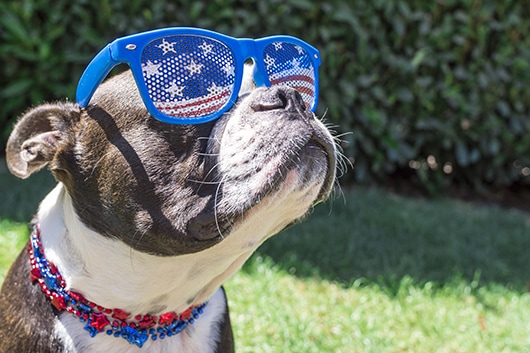Late Sunday afternoon, our long-time employee, Dawn Tate, experienced just such a moment. After hanging out with her two dogs, Chevy and Koko, in an open field near her home, Dawn realized that her Florida cur, Chevy, had not returned from her recent romp. Minutes later, as Dawn’s searches became more and more frantic, she realized that Chevy had vanished.
After a several minutes of fruitless searching, Dawn launched a full-out rescue attempt. Not only did she contact her local Animal Control Department, but also the police. Both agencies expressed concern for Chevy’s welfare and were only too happy to receive her emails with photos of Chevy, so they could keep an eye out. In addition to contacting the authorities, Dawn turned to social media for help. She posted images of Chevy and shared her last-known location with her friend network. Unfortunately, there were no sighting reports of Chevy.
Thanks to a helpful friend, Dawn decided to try a recovery strategy that someone shared online. It’s a method that’s popular among outdoorsmen for lost hunting dogs. The trick is this … return to the location where you first became aware you were separated from your canine. At the scene, place at least one article of recently worn clothing (not anything freshly clean from the wash). The more scent it holds, the better. If at all possible, also bring along a crate or carrier and two or three of your dog’s favorite toys. It is recommended that you also provide a bowl of water (not food, as it may attract wildlife that might scare off your dog). You might also consider leaving a note for any people who happen by, requesting that the items remain undisturbed and why.
The basic concept here is that your dog wants to return to you, he just can’t find you. Thanks to their incredible sense of smell, they will be able to find their way back to these familiar items. Time and time again, this method has proven highly successful in reuniting lost dogs with their caretakers.
Why is it so effective? Dogs have an amazingly keen sense of smell. Their noses possess up to 300 million olfactory receptors, which is 50 times more than humans. To convert all of the sensory data picked up by these detectors, there’s a great deal of processing power. The canine brain allocates 40 times more brain power proportionately, compared to people.
It’s hard to quantify exactly how much better a dog is at detecting scents compared to ours. Some experts say it’s a 1,000 times better, while others say it’s one million times better. And humans actually have well-developed sniffers. All of us have had the experience of returning home and opening the front door to smell that someone’s been cooking. You were probably even pretty sure what dish was being made. If we can smell this, a dog could detect the same in a house the size of an average-sized city!
Dogs are able to pick up on a whole host of information from smells. When it comes to knowing their pet parent, they can read unique chemical markers (such as hormones) that we’re not even aware we’re emitting. With one breath, they can easily determine if we’re fearful, anxious or sad. That’s astonishing! Just remember, the next time you’re walking your dog and she lingers to smell the grass, she’s reading all sorts of information from the last dog that passed by. In this scenario, veterinary experts would say that your dog’s interior thoughts probably sound like, “Let’s see, you’re also a girl, you’re about 4 years old, you had a chicken-based meal this morning, you were super excited on your walk, etc.”
A HAPPY RESOLUTION
It was a frightening 24 hours, both for Dawn and for Chevy. But thanks to the innovative strategy we just explained to lure her back to the exact spot where they were separated, Dawn, Koko and Chevy are now safely back under the same roof. Yay!
























 RSS Feed
RSS Feed




